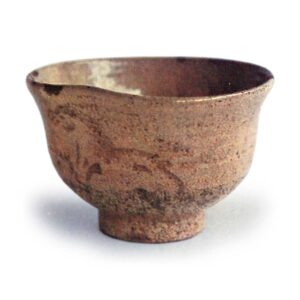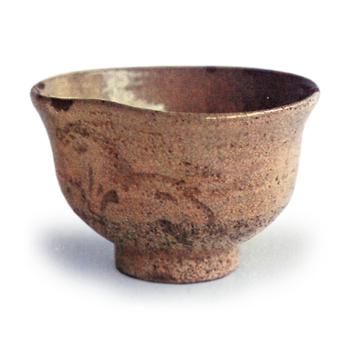
Pottery produced in Nakamura, Soma City and Ohori, Namie Town, Futaba County, Fukushima Prefecture. Also called Banjo ware. Nakamura’s pottery is called Soma Koma-yaki, and Ohori’s is called Ohori Soma-yaki.
Soma Nakamura “(The founder of Soma [Soma Koma ware] is said to have been Tashiro Gengoemon, and the origin of the Soma ware horse-e tea bowl kiln is said to have been during the Kan’ei era (1624-44). Upon his return to the domain after seven years of training, he was given the character “Kiyoshi” by Ninsei, and changed his name to Seijiemon. After returning to his domain, he opened a kiln under Nakamura Castle by order of the feudal lord, but this was an imperial kiln and private sales were prohibited until before the Meiji era. He died in 1658. During the reign of Seijiemon II (1683-, died in Tenwa 3), at the special order of the feudal lord, he began to produce piece paintings based on a sketch of a running horse in the Hibariga field drawn by Kano Naonobu during his visit to the castle, which was the origin of Soma-koma-yaki. In 1867, when Seijiemon XI was appointed as the 11th Seijiemon, he received the title of Hohashi from the court, and later used the seal inscription “Tashiro ‘Hohashi'”. The name “Hohashi” was later used in the name of the Tashiro “Hohashi” seal.
Soma Pottery was started around 1690 by Hanya Kyuukan of Ohori Village, who had his servant, Soma, learn the pottery method. He then began pottery making by order of the lord of the domain, the Marquis of Soma. At first, only seven villagers were allowed to learn the technique, and they were called “Shichininshu,” meaning that the technique could not be passed on from one generation to another and could not be seen by others, Finally, a pottery bureau of the domain was established in Ohori to promote the industry. Most of the products were daily-use utensils, mainly to meet the demand within the clan and to trade with people outside the clan. The pottery industry has continued since the Meiji period, but the most well-known works are the celadon porcelains with Koma-e, which are considered to be a distinctive feature of this industry.



